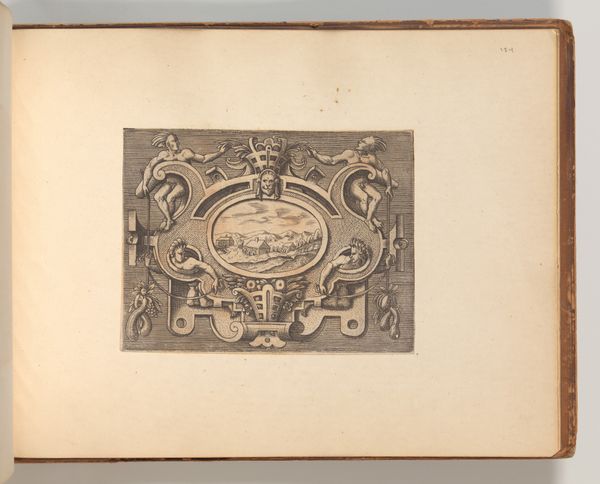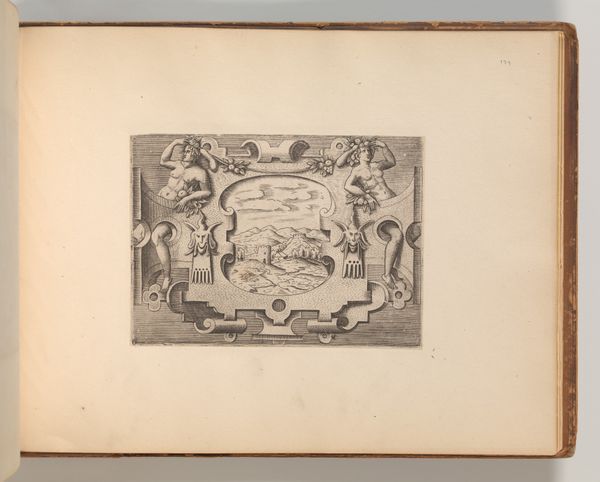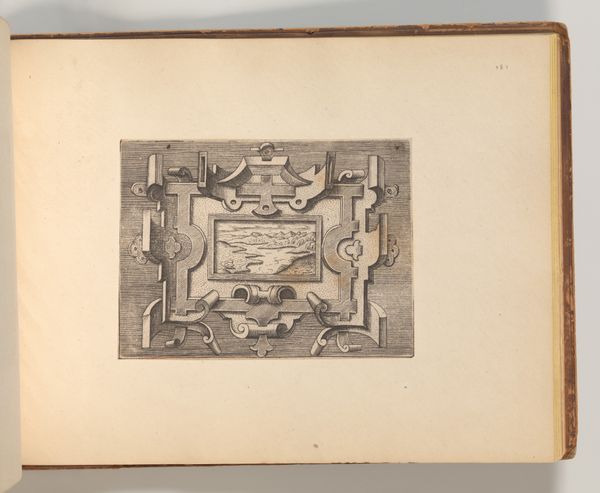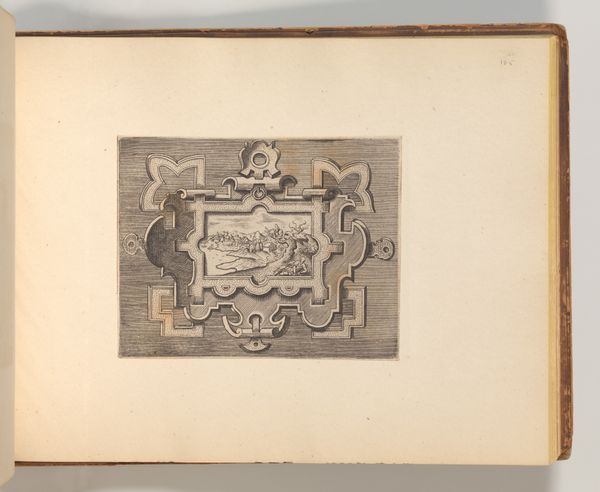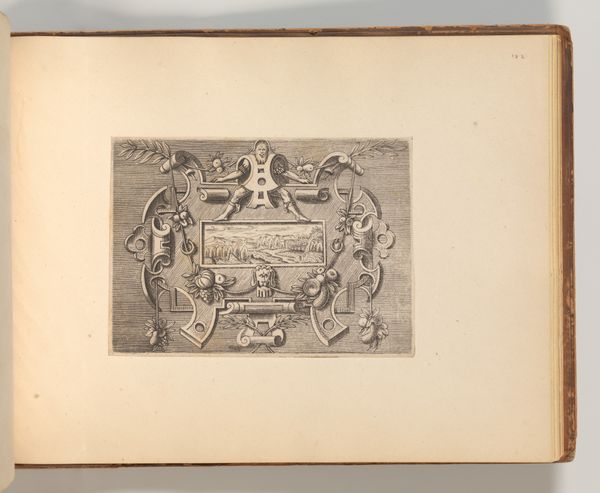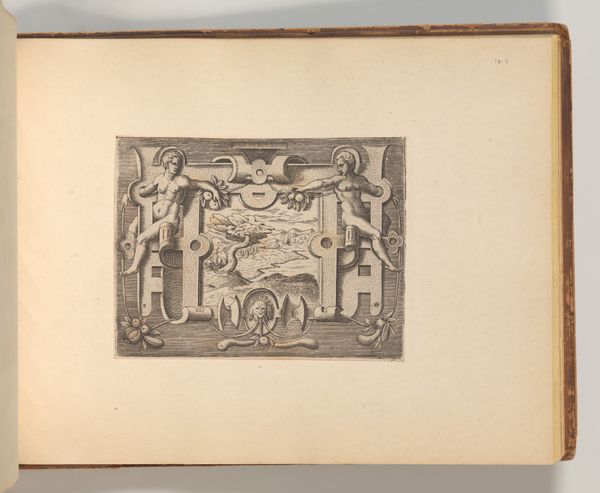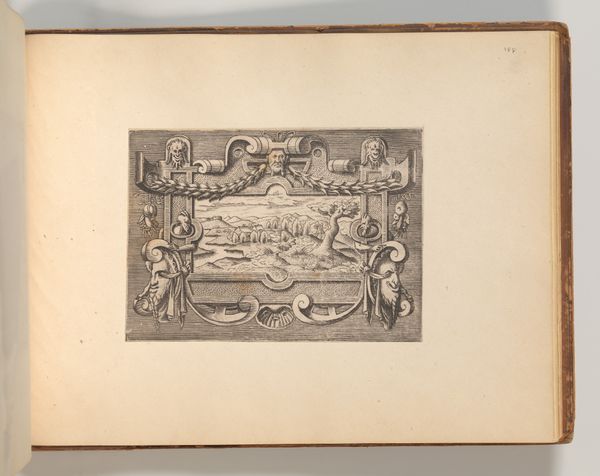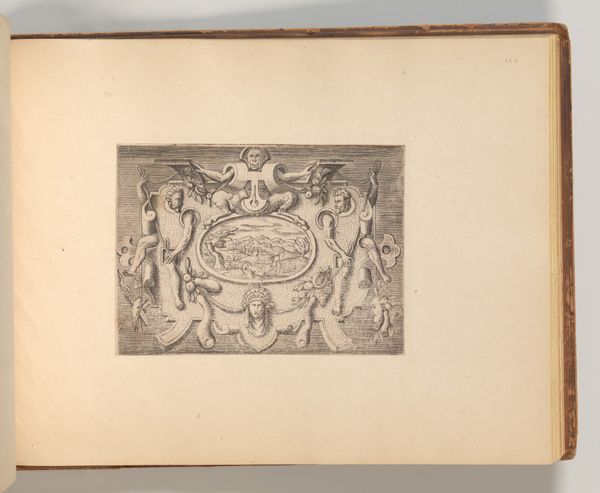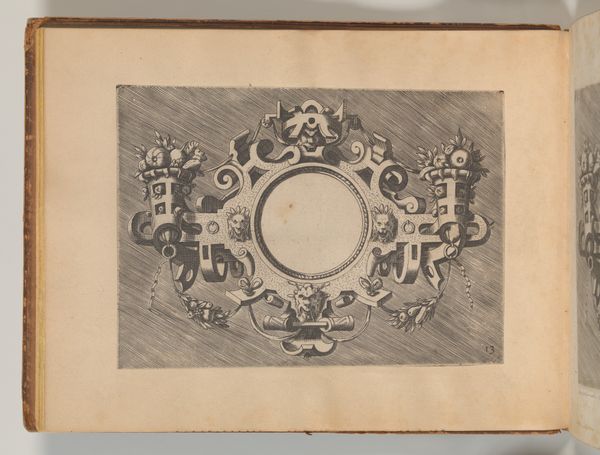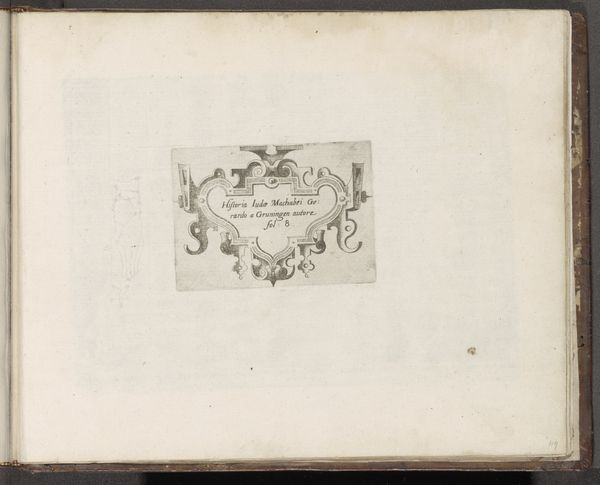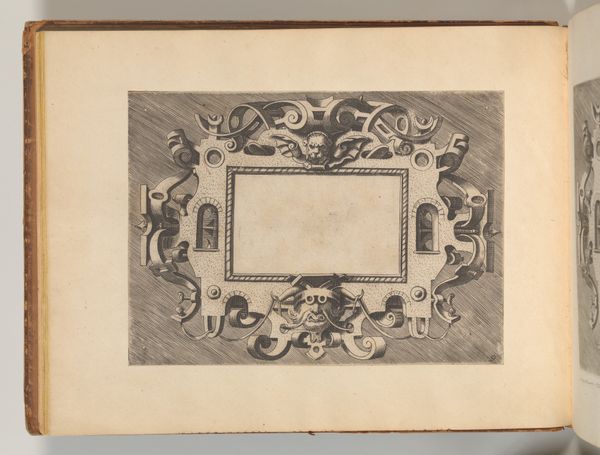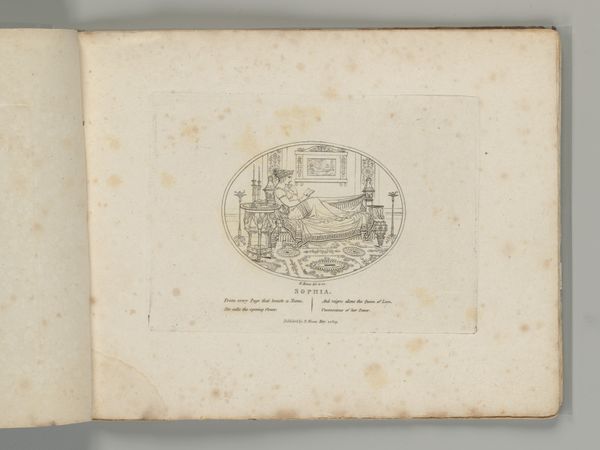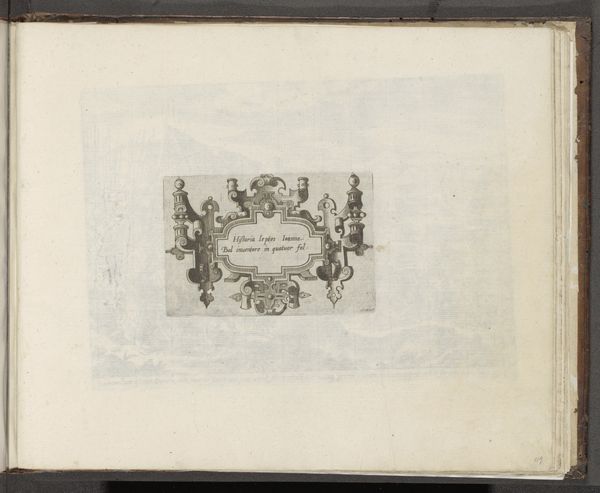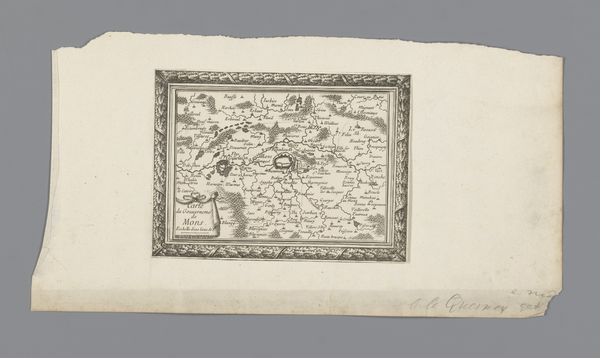
Series of Cartouches, in: Targhe ed altri ornati di varie e capricciose invenzioni (Cartouches and other ornaments of various and capricious invention, page 52) 1540 - 1560
0:00
0:00
drawing, print, engraving, architecture
#
drawing
# print
#
landscape
#
italian-renaissance
#
engraving
#
architecture
Dimensions: Sheet: 7 7/8 × 10 5/16 in. (20 × 26.2 cm) Plate: 5 1/8 × 11 13/16 in. (13 × 30 cm) Overall: 8 1/4 × 10 5/8 in. (21 × 27 cm)
Copyright: Public Domain
Curator: Let's turn our attention to this intriguing engraving by Cornelis Bos, dating from around 1540 to 1560. It's titled "Series of Cartouches, in: Targhe ed altri ornati di varie e capricciose invenzioni," and we are viewing page 52. Editor: My initial reaction is captured by the stark, yet intricate line work. There's such clarity achieved with what seems like so little material. And the use of landscape in this contained oval is charming. Curator: Indeed. What makes Bos's work significant is how it reflects the broader artistic and social currents of the Italian Renaissance. Consider how printed ornament books like this circulated artistic ideas across Europe, democratizing access to design and influencing everything from architecture to furniture. Editor: It is essentially an early instruction manual—almost a prototype for IKEA's assembly diagrams! Look at how clearly the composition and different cartouches could be reproduced, showing us the step-by-step creation of these ornamental features in real life, as an act of craft. Curator: Precisely. Bos was contributing to a visual language, and establishing conventions for architectural decoration. We see this cartouche, in particular, serving as a kind of prototype for the framing of imagery, even texts, that would come later. A tool of display and therefore a tool of power, isn't it? Editor: A crucial point. What strikes me is the labor that must have gone into this—all these meticulous lines incised onto the metal plate. This object shows not only intellectual design but also skilled handwork that’s so easy to overlook. This level of fine craft shows dedication of the artisan to their work, reflecting the social fabric and values embedded within the work process itself. Curator: It is a testament to the Renaissance's synthesis of art, craft, and intellect. I see this as more than just ornament, I see these engravings shaping the visual landscape. Editor: It's all the means of production, shaping everything! Thank you for making this more than just a pretty picture, illuminating it. Curator: A vital object from the past. This small piece provides such important context to everything around us.
Comments
No comments
Be the first to comment and join the conversation on the ultimate creative platform.
